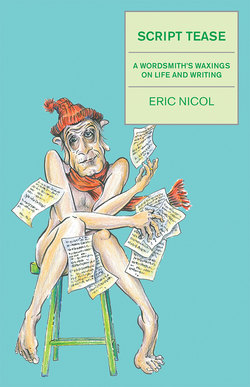Читать книгу Script Tease - Eric Nicol - Страница 15
На сайте Литреса книга снята с продажи.
ОглавлениеMODUS OPERANDI
Now that you have chosen the kind of creative writing you wish to do, and written it down as a reminder in case you start to drift off into doodling or worse, what gear do you need besides the stout eraser?
A computer. As mandated earlier in this lecture, this has to be the most important relationship in a writer’s life. Yet, and as incredible as it may seem to us today, much of our past literature was created without the aid of a computer. Writers such as Shakespeare, Samuel Johnson, and even Charles Dickens wrote what they did with no laptop other than the one made when they sat down. What they wrote was not by the grace of Bill Gates. So how did they do it and still produce very acceptable written work?
Examination of old manuscripts — from the Latin words for “hand” and “written” — reveals that all of this peerless material was written with pen and ink. Yes, they didn’t even have a ballpoint to chew. Writers had to dip their “pen” — often little more than a turkey feather renamed “quill” — into a bottle of murky liquid. Dozens of times a page. The quill had no delete button. This meant that the writer had to think before he wrote. Otherwise the page looked really messy, which is the main reason why most of the early writers were monks depending on divine guidance.
Now, some antiquarians argue that handwriting gave the writer the feel of the words he was using, the rhythm of a sentence, the concerto of the paragraph.
Twaddle! Writers were composing on the typewriter — a clackety device with no warning of misspellings — for years without loss of lyricism or other ill effect except the increase in alcoholism.
True, there is some clinical evidence that it is prudent to write a first draft in pencil, then transfer the text to the computer. Reason: the computer has been known to lose an entire novel. A critique, perhaps, but one that the writer didn’t ask for.
